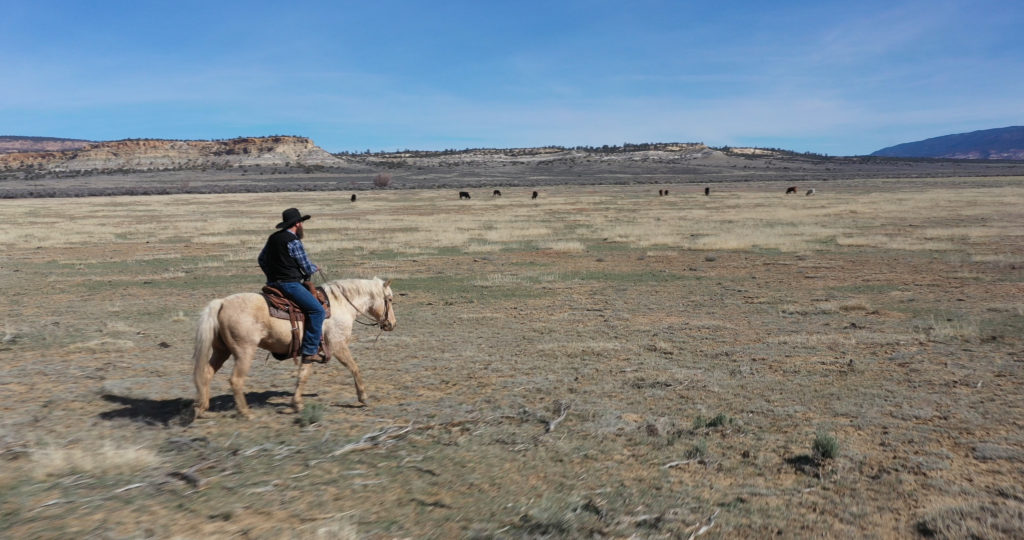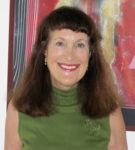
By Mimi Pollack
L’Chaim San Diego Magazine

SAN DIEGO — My late fiancé, an 8th generation New Mexican, used to tell me about the secret or crypto Jews of New Mexico. He was convinced that although he was raised Catholic, some of his ancestors were “Conversos” or secret Jews who came to New Mexico when it was being colonized by Spain. During the time of the Inquisition, the Conversos were Jews who pretended to convert to Catholicism to avoid being killed. Some of them really did convert, but many continued practicing their Jewish traditions in secret for generations, perhaps without even knowing why. Michael would tell me of his Catholic grandmother lighting candles on Friday evenings because it was a family tradition.
I find the subject fascinating, so I was happy to preview local filmmaker Isaac Artenstein’s new documentary, A Long Journey, The Hidden Jews of the Southwest. This documentary chronicles the journey of the Sephardic Jews of New Mexico and Southwest Arizona as well as the Northern Mexican border town, Ciudad Juarez, and how they found their ancient roots and returned to the Jewish faith.
I have always had an interest in cowboys and I am probably not the first Jewish woman to say this, so I closely followed the story of Tim Herrera, a cowboy, New Mexican cattle rancher, and proud Jew. Although not everyone in his mostly Catholic family approved, he rediscovered his Sephardic Jewish roots and converted to Judaism as did his wife and children. He embraced his faith and roots so strongly that he is currently in the process of moving to Israel as he wants bring his experience as a rancher to the Holy Land and raise cattle there. Herrera is one of many Sephardic New Mexicans who have embraced Judaism, a theme the documentary explores.
This documentary came about after Artenstein finished, Challah Rising in the Desert – the Jews of New Mexico. Artenstein said that after showing the film at various screenings, so many people in the audience stayed after and talked about discovering their Sephardic roots and converting with such deeply felt emotion, that he and his long-time producer, Paula Amar Schwartzm decided to make a follow up documentary and find out more about the history and lives of these hidden Jews.
Artenstein and his crew traveled throughout New Mexico and Southwest Texas to explore the world of the descendants of the “crypto Jews” and how many of them are exploring their family trees and coming back to Judaism, not always an easy feat. First, they have to research their ancestors and find the documentation that shows that they are descendants of Sephardic Jews. In fact, the Jewish Federation of New Mexico is one of the leaders in confirming a Sephardic background. Next, some have to contend with families who like Herrera’s family are dismayed that they are leaving the Catholic Church.
While filming, Artenstein and his crew met and interviewed many interesting characters starting with cowboy Herrera. There is the scholar, Ron D. Hart, who wrote the companion book for the film. There is the artist Charlie Carrillo, a Santero [one who draws saints or retablos] whose work is inspired by Spanish Jewish and Catholic imagery. Although Carrillo is Catholic, he is proud of the Sephardic roots many New Mexicans have and melds his art making sure his Hebrew letters are correct. There is Blanca Carrasco who honestly speaks about grappling with not feeling accepted by some of the congregants at her previous synagogue and her road to Judaism. Finally, there is Luis de Carvajal.
For me, the most charismatic of all the people interviewed is Stephen Leon, the Rabbi Emeritus of Congregation B’nai Zion in El Paso, Texas. A warm and jovial Ashkenazi Jew from New Jersey, he has made it his life’s mission to serve the Sephardic community of El Paso and also Ciudad Juarez across the border. He helped many in their conversion and assimilation. For him, it was his tikkun olam.
This documentary is also worthy because it can be the catalyst for different discussions, such as the history of the people of New Mexico; the legacy of the hidden Jews or Conversos; the lives and problems faced by those who converted in present day; and the traditions of Sephardic Jews. In the United States, much more is known about Ashkenazi Jews.
Finally, up until last year, the Spanish government was offering Spanish citizenship to those who could prove they had Sephardic blood. There was a rush of both American and Mexican Jews and Jews from around the world who coveted Spanish citizenship and applied to the program. Many researched their ancestry to prove they had Sephardic blood and were able to obtain the citizenship. Some of this is discussed in the film. I personally know a large family from Mexico who received Spanish citizenship as they were able to trace and prove their Sephardic blood through their very Catholic mother/grandmother!
The photography in the documentary is stunning, especially the aerial views. It really gives the viewer a sense of the cultural and natural landscape, especially New Mexico. Artenstein worked with his other long-time collaborator, his director of cinematography, Sergio Ulloa.
All in all, this educational documentary is worth seeing.
The official premiere of the documentary is November 19th at 7:00 p.m. on KNME/NMPBS in New Mexico. Since it will also be aired nationally, it is a good idea to check your local PBS affiliates for the air time.
A talented filmmaker, Artenstein is also known for his films, Tijuana Jews and To the Ends of the Earth, A Portrait of Jewish San Diego. His website is www.cinewest.net.
*
Mimi Pollack is a freelance writer based in La Mesa, California, She may be contacted via mimi.pollack@sdjewishworld.com This article appeared initially in the monthly magazine L’Chaim San Diego, which has kindly granted permission for us to republish it.
Pingback: Crypto Jews: Finding and Embracing their Roots – BitcoinLifestyle.com